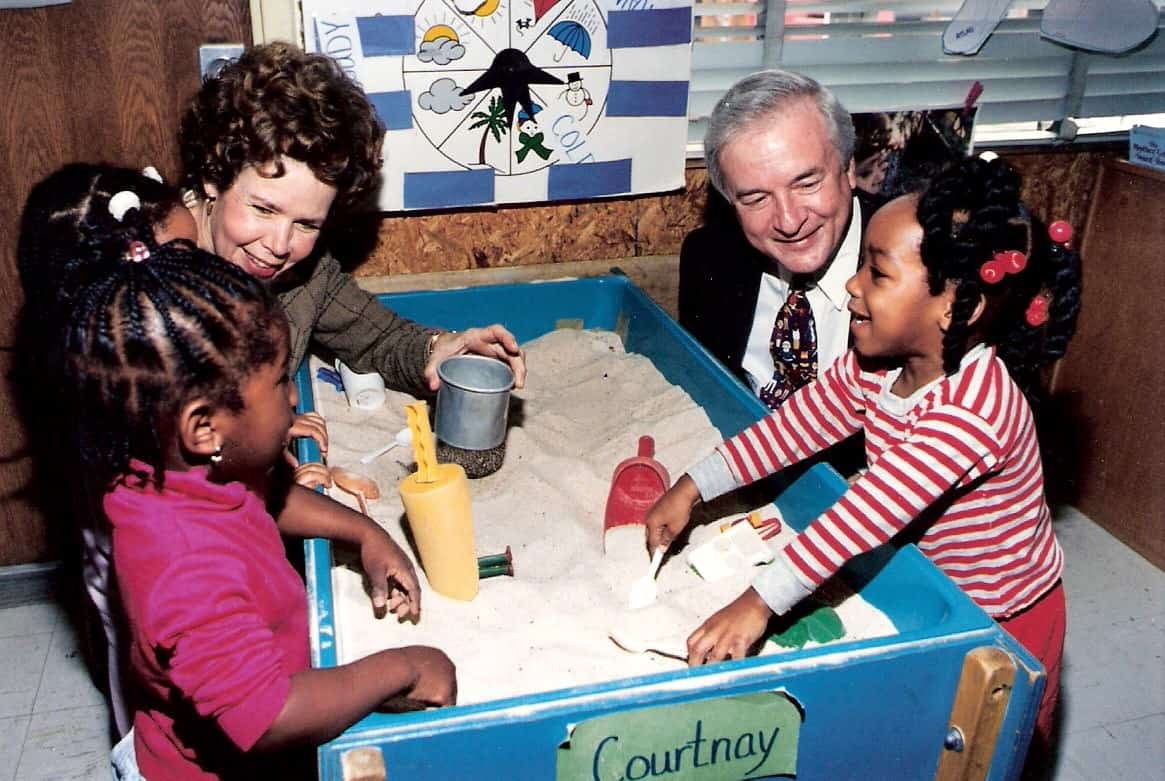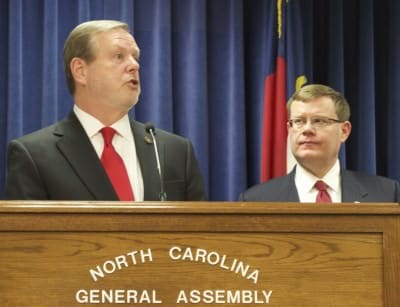

Over the past five years, Democrats have watched as a Republican legislative majority unraveled the fabric of state education policy containing threads dating back to the governorship of Terry Sanford in the early 1960s. No longer holding the governor’s office and now having too few legislators to block the GOP majority, Democrats have opposed and protested, but without power to go beyond trying to limit the sweep of the Republican agenda.
The 2016 elections approach with North Carolina Democrats still sobered and troubled by their losses in the 2010, 2012, and 2014 elections, still in search of a message and a political strategy as they face an incumbent governor seeking re-election and a legislative map drawn to embed a Republican majority. And yet, unlike several Southern states where the Democratic Party has practically collapsed over the years that Republicans pursued its “Southern strategy,” North Carolina Democrats have held together a coalition capable of winning statewide elections.
In the 11 presidential-year elections since 1972, when Richard Nixon’s landslide carried Jesse Helms into the U.S. Senate and Jim Holshouser into the governor’s office, Republican presidential nominees have carried North Carolina nine times, Democrats twice. In the same span, Democrats have won the governorship seven times, Republicans four.
Former Gov. Jim Hunt … earned a reputation as an “education governor.”
Hindsight makes it clear that former Gov. Jim Hunt served as state Democrats’ principal bulwark in the last quarter of the 20th century. He served four gubernatorial terms — 1977-1985 and 1993-2001 — and earned a reputation as an “education governor.” His initiatives included reading assistants in elementary classrooms, a four-year plan to raise standards and pay for teachers, the ABC program combining higher standards and statewide assessments, and the National Board for Professional Teaching Standards.
Hunt now serves as the state Democrats’ elder statesman, helping to raise funds, define issues, and motivate allies. He supports Hillary Clinton for president and Attorney General Roy Cooper for governor. He sees both candidates as like-minded proponents of a moderately progressive education agenda — and candidates who can raise enough money to keep North Carolina an in-play swing-state next year.
Democrats look to demographic shifts to bolster their future fortunes, as the proportion of white voters declines and the state’s electorate becomes more multi-ethnic. In the 1970s and ’80s, population growth bolstered the GOP, as suburbs ballooned with mostly white in-migrant professionals and business managers. Meanwhile, Republicans also became the political home of rural residents and working people formerly associated with Democrats.
In the 1990s and 2000s, population growth tended to favor Democrats as North Carolina cities attracted an array of people that form the current core of the Democratic Party: young college educated blacks and whites, single women, environmentalists, teachers, creative-class entrepreneurs, and professionals. The modern Democratic Party features a biracial coalition, anchored on a metropolitan base. Democratic leaders, like Hunt and his successors Mike Easley and Bev Perdue, sought to appeal to the party’s modern coalition through public school reforms and alliances with business in behalf of economic development, while attempting to keep in tune with the state’s cultural conservatism.
In North Carolina, as elsewhere, the Democratic Party is the party of governance — a source of its strength but also of its political dilemma.
How can Democrats make a case for the role of government in addressing critical issues, including lifting education attainment and closing achievement gaps, in today’s anti-government atmosphere?
During the Hunt governorships, North Carolina was growing in population and expanding its economy, producing revenues to finance his education initiatives. As the economy stumbled in the early 2000s, Easley maneuvered successfully to advance education initiatives through adoption of the lottery and through a sales tax increase.
But now, Republicans have cut taxes, as well as shifted the tax structure, less from the income tax, more from the sales tax. The tax cuts, extended through the rest of this decade, will make it more difficult to finance teacher pay raises and enhancement of early childhood education of the scope envisioned by Democrats. Moreover, the Great Recession of 2008-09 intensified the squeeze on the middle class; how do Democrats advocate for increased education spending that would overcome resistance to tax increases from people already feeling economically burdened?
As the opposition party, Democrats surely will seize on the controversies and miscues of the McCrory administration and the Republican legislature. But they also know that they cannot reverse the results of the past three elections in the course of the 2016 campaign. Democratic strategists seek to win a Cooper governorship and to add just enough legislative seats to eliminate the Republicans’ veto-proof majority. Together, those developments would give Democrats leverage to forestall further unraveling of Democratic-era education policy and buy time for Democrats to re-build and re-think beyond 2016.


